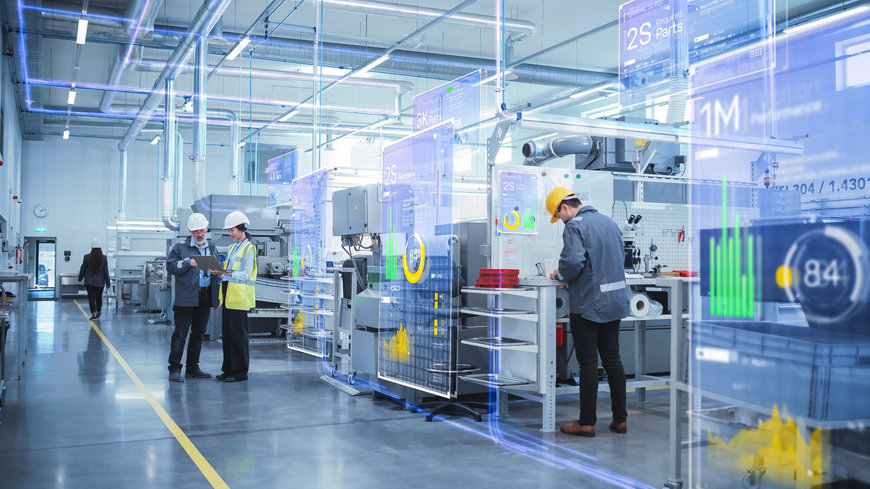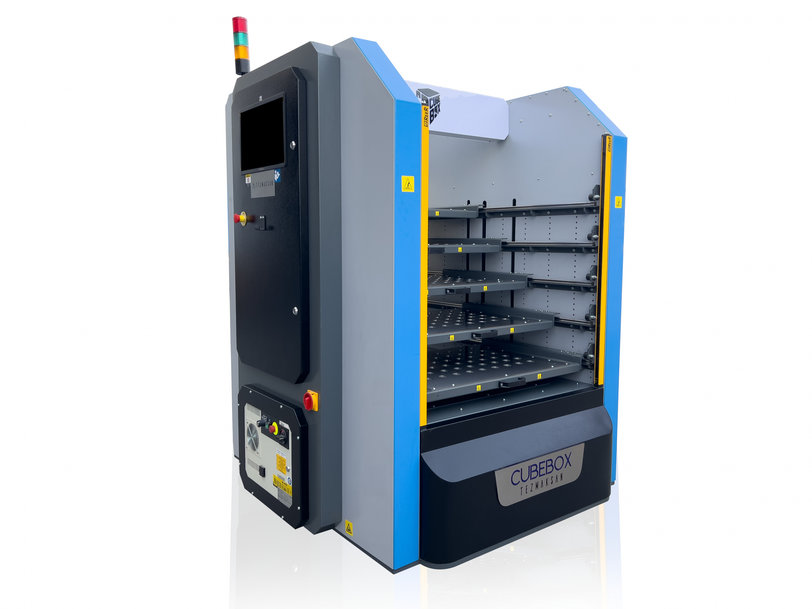metalworkingmag.com
18
'24
Written on Modified on
Tezmaksan News
Unlocking smart machine shops
Communication-agnostic software addresses legacy equipment challenges.

Forbes magazine predicts that “By 2026, at least 75 per cent of large enterprises are expected to adopt some form of intralogistics smart robots in their factories,” many manufacturers hesitate, citing the barriers of legacy equipment and interoperability issues. Here, Hakan Aydogdu, general manager of CNC automation system manufacturer, Tezmaksan Robot Technologies, argues that communication agnostic software is key to unlocking smart operations in machine shops — including those operating with legacy equipment.
Despite Forbes’ predictions, Many manufacturers remain wary of Industry 4.0 — but why? The most obvious obstacles are financial barriers. Upgrading an entire shop to smart operations can be financially daunting. Sunk costs in existing equipment may deter businesses from investing in new, Industry 4.0-ready hardware.
Another barrier is legacy equipment. A significant number of metalworking businesses operate with legacy equipment that may not be inherently compatible with modern Industry 4.0 technologies. Replacing such machinery entails substantial costs and downtime. Lastly, there are interoperability issues. Many machine shops have a mix of equipment from different vendors, leading to interoperability challenges between hardware and software. Vendor-specific solutions often create silos, inhibiting seamless communication between diverse components.
Agnostic software
What can machine shops do to overcome these issues? Fortunately, a solution exists in protocol and communication agnostic software platforms. The software functions independently of specific communication protocols, allowing seamless interaction — including cloud communication — across diverse platforms without dependency on particular technologies.
Machine shops face several challenges that can be effectively addressed by adopting hardware-agnostic software, especially in the context of Industry 4.0. First, hardware-agnostic software facilitates compatibility with equipment from various manufacturers, enabling smooth integration and communication across the shop floor.
This ensures that existing machinery can be part of a unified, intelligent system. Agnostic software also allows machine shops to retrofit existing equipment with intelligent capabilities. By decoupling software from hardware dependencies, it enables the smart operation of legacy machines, extending their functional lifespan and delaying the need for costly replacements.
Lastly, agnostic software mitigates the financial burden by enabling machine shops to adopt smart functionalities without discarding their current investments. This approach leverages existing hardware, making the transition to Industry 4.0 more cost-effective.
Let’s use the example of machine vision systems. The pace of technological evolution often renders hardware obsolete sooner than anticipated. The lack of interoperability between different hardware components, or between hardware and software exacerbates this issue. Vendor-specific software solutions often mandate the purchase of new cameras and sensors. This leads to the challenge of “sunk costs” — having invested significantly in existing equipment, decision-makers hesitate to discard and rebuild.
Enter the concept of retrofitting, a solution often overlooked by quality and plant managers. Hardware-agnostic software provides an alternative by enabling existing machine vision hardware to adapt to cutting-edge software solutions — without the need for a complete overhaul. This adaptability ensures that the initial investment in hardware is not rendered obsolete prematurely.

CNC automation systems
How can software benefit other areas of automation? A great example is offered by the CubeBOX CNC automation system from Tezmaksan Robot Technologies.
At the heart of CubeBOX is its sophisticated software, RoboCAM. This software eliminates the need for intricate robot programming and extensive CAM knowledge. By converting 2D CAD drawings into CAM instructions, RoboCAM simplifies the entire process, making it accessible even to operators without specialised training or programming knowledge. This democratisation of robot programming opens access to a wider audience in manufacturing, and training can be delivered more quickly.
The system's standard structure is compatible with all CNC machines and control units, adaptable to various robot brands and it costs 20 per cent less than company-specific robot integration systems. Moreover, its plug-and-play nature allows for quick commissioning, often completed in a single day.
The CubeBOX system introduces a change in basic assumptions about CNC machine automation. The system enables multiple machines to operate seamlessly without interruptions, such as those stemming from loading and unloading processes. Offering round-the-clock operation without the need for constant operator intervention, the primary benefit of the CubeBOX system lies in its ability to work seamlessly and continuously.
Agnostic software addresses challenges related to interoperability, legacy equipment and financial constraints. It serves as a key enabler for machine shops to transition into smart operations, fostering efficiency, adaptability and competitiveness in the evolving landscape of Industry 4.0 — even those with legacy equipment.
www.tezmaksan.com

